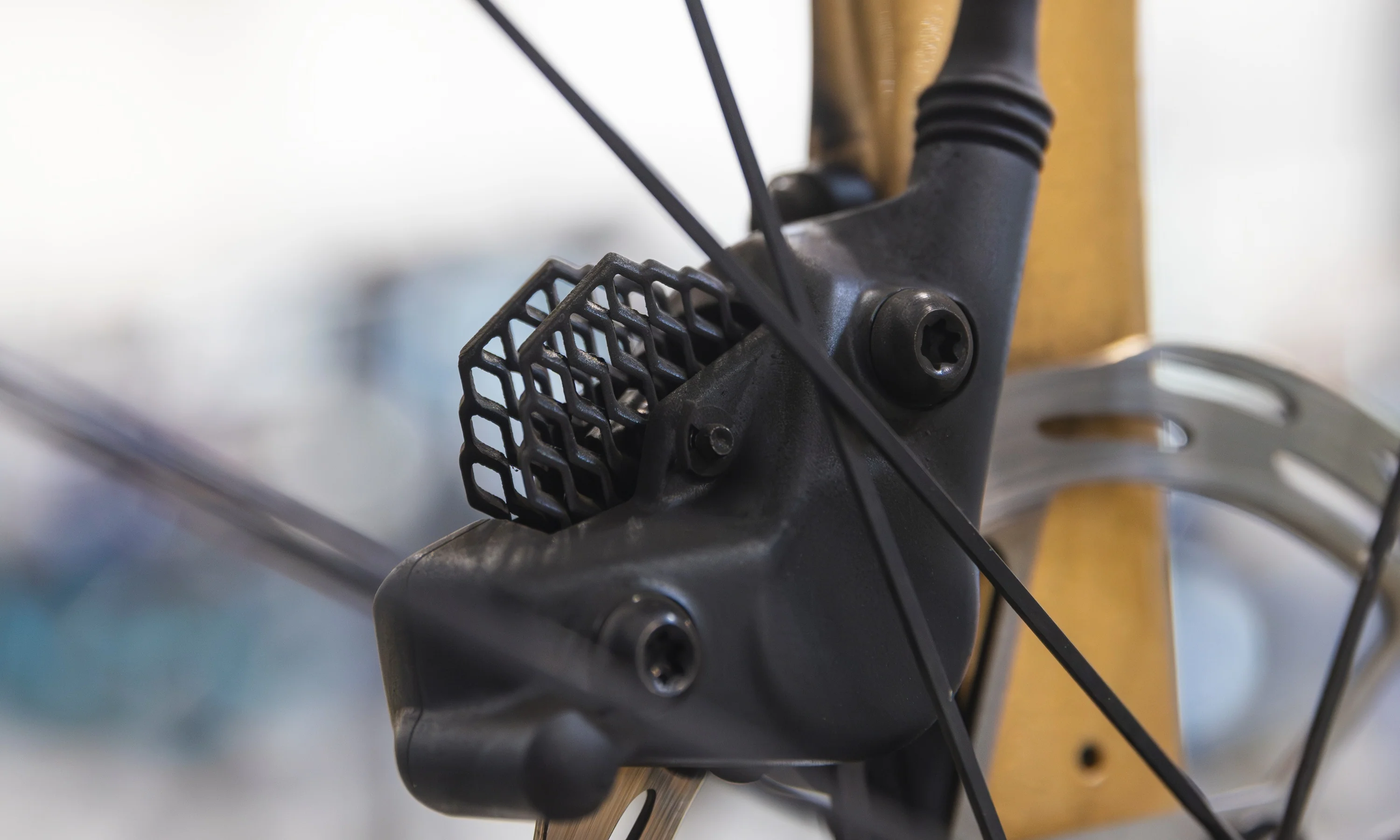Tubeless tires have already taken over mountain and gravel biking. Guess what, road cycling is next. Tubeless road tires provide more comfort, less rolling resistance, and of course, extra puncture protection. A lot of modern road bikes are even coming from the factory with tubeless-ready wheels.
I’ve been riding tubeless road tires for years and I love it, but plenty of roadies are still on the fence. Installing tubeless tires can seem intimidating. To help you get set up tubeless at home, I’m going to explain how it’s done and give you some tips and tricks to make it easy.
Road tubeless supplies
Essential supplies:
- Tubeless-ready wheels
- Tubeless-ready tires
- Tubeless valves
- Tubeless sealant
- Tubeless sealant injector
- Tire levers
- Pump or CO2 inflator
As long as your wheels and tires are advertised as “tubeless” or “tubeless-ready,” they will work. Though not necessary, wheels and tires made after 2020 can make tubeless installs easier because of updated ETRTO standards.
Most tubeless-ready wheels come pre-taped with tubeless tape, a plastic-like tape that is airtight. If not, you will need to tape your wheels first. Tubeless tape should be 3-5mm wider than your rim’s internal width. If your wheels did not come with tubeless valves, make sure to purchase valves 10-30mm longer than your rim depth.
[product-block handle="stans-notubes-tire-sealant-injector-syringe-presta-schrader"/]
Sealant injectors let you measure a precise amount of sealant and inject it through the valve. They aren’t essential, because you can also pour sealant into the tire before seating it, but it’s usually less messy and more convenient to use an injector.
[button]Shop tubeless road wheels[/button] | [button]Shop tubeless road tires[/button]
Nice-to-have supplies:
- Valve core tool
- Tire bead jack
- Air compressor
A valve core tool is used to remove the Presta valve core from tubeless valves. This is useful for seating tires or injecting tubeless sealant. Valve core tools are cheap, but you can also get away with using a small crescent wrench or 5mm box wrench.
[product-block handle="feedback-sports-valve-tool"/]
Bead jacks are a handy tool for installing tubeless tires that are extremely tight and stubborn. They give you extra leverage to pull the tire bead over the rim wall without damaging your tubeless tape, which can happen when using tire levers too aggressively. We like the Kool Stop Bead Jack.
How to install and set-up tubeless road tires
 1. If your wheels don’t have tubeless valves installed, insert the valves into the valve holes. Secure them with the valve nut. Make sure to screw the valve nut only finger tight.
1. If your wheels don’t have tubeless valves installed, insert the valves into the valve holes. Secure them with the valve nut. Make sure to screw the valve nut only finger tight.

Get as much of the tire bead as possible in the center channel.
2. Install your tire. Due to tight tolerances, tubeless tires can be difficult to install. The key is to get the tire bead into the recessed center channel of the rim as much as possible. This gives you more slack to keep pulling the bead over the rim lip. I like to start installing the tire bead at the side opposite the valve. Without the valve in the way, you get the most slack possible. If you need use tire levers, pay careful attention so you don’t damage the tubeless tape.
 Pump fast!
Pump fast!
3. With the tire installed, it’s time to inflate and seat the tire beads on the rim. If you have a wheel and tire set-up that plays nice, the tire will usually seat with a few vigorous pumps from a floor pump. If that doesn’t work, refer to the tubeless tips and tricks below. You should hear a popping sound as the bead seats. Inspect the entire perimeter to ensure the beads are fully seated. Most tires have a faint rubber molding line just above the bead that should be visible all around the wheel. If a particular spot isn’t seated, continue adding air. If you reach the max recommended pressure for your tire or rim, try spraying some soapy water on the bead to lubricate it and bounce it on the ground a few times to encourage it to seat.
 4. After fully seating the tire beads, you can let the air out and the tire will stay seated. Remove the valve core and add 60 ml or 2 oz. of sealant using the sealant injector. It’s easiest to inject sealant while the valve is at the 6 o’clock (bottom) position. After injecting the sealant, turn the wheel so the valve is above the 3 or 9 o’clock position before removing the injector. This keeps sealant from spraying back out of the valve when you remove the injector.
4. After fully seating the tire beads, you can let the air out and the tire will stay seated. Remove the valve core and add 60 ml or 2 oz. of sealant using the sealant injector. It’s easiest to inject sealant while the valve is at the 6 o’clock (bottom) position. After injecting the sealant, turn the wheel so the valve is above the 3 or 9 o’clock position before removing the injector. This keeps sealant from spraying back out of the valve when you remove the injector.
 5. Reinstall the valve core and inflate the tire to your desired air pressure. Wipe up any spilled sealant. Spin the tire or shake it to distribute the sealant.
5. Reinstall the valve core and inflate the tire to your desired air pressure. Wipe up any spilled sealant. Spin the tire or shake it to distribute the sealant.
Tubeless install tips, tricks, and troubleshooting
The trickiest part of a tubeless tire install is seating the tire beads. If you are unable to seat your tire beads with a floor pump, these are the next steps. Try them in order, or if you want the greatest chance of success, use them all in combination.
Trick 1: Remove the valve core before attaching your floor pump/CO2 inflator/air compressor. This opens up the valve so you can pump air in faster and seat the tire.
Trick 2: Seat one bead using a tube. You’ll have to take the tubeless valve back out. Put a tube in, reinstall the tire, and inflate until the tire beads are seated. Pop one bead, pull the tube out, and reinstall the tubeless valve. With one bead already seated, it’s much easier to seat the other side.
Trick 3: Use a strong burst of compressed air. If you’re fortunate enough to have an air compressor, this will be easy. For the rest of us, there are special pumps and chargeable canisters made specifically for tubeless tires that can provide a burst of air. Personally, I prefer using a basic CO2 inflator. Most riders already have one and extra CO2s are cheap and easy to get. If you choose to seat your tire with CO2, make sure to do it before adding sealant. Release all the CO2 before adding sealant, as the CO2 can degrade sealant.
[product-block handle="sks-16g-co2-threaded-cartridges-2-pack"/]
Got leaks? If you notice air and sealant leaking out around your spoke holes, that usually means your tubeless tape is compromised and needs to be replaced. If air is leaking out from the valve hole, try tightening the valve nut. You may notice some sealant seeping from the tire sidewalls. This will usually seal over time, though you may need to add more sealant later.
[button]Shop road bikes[/button]
Hopefully, this makes installing tubeless road tires at home quick and easy. If you struggle your first time, don’t get discouraged! Do it once and learn what works for you, then future tubeless tire installs will become much, much easier. I can do a tubeless install as quickly as a standard clincher install, and I think it’s worth it for the benefits.
If you have any questions, leave them in the comments. And if you have any tips and tricks I haven’t mentioned, I’d love to hear them!
We meticulously (and independently) pick every product, and if you purchase through our links we may earn a commission.

























